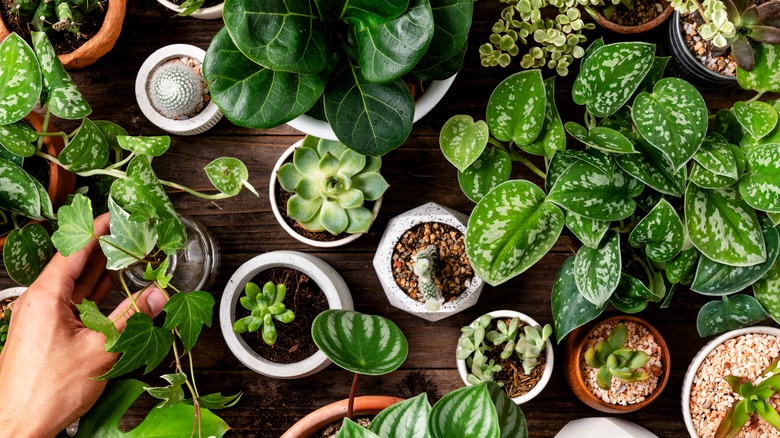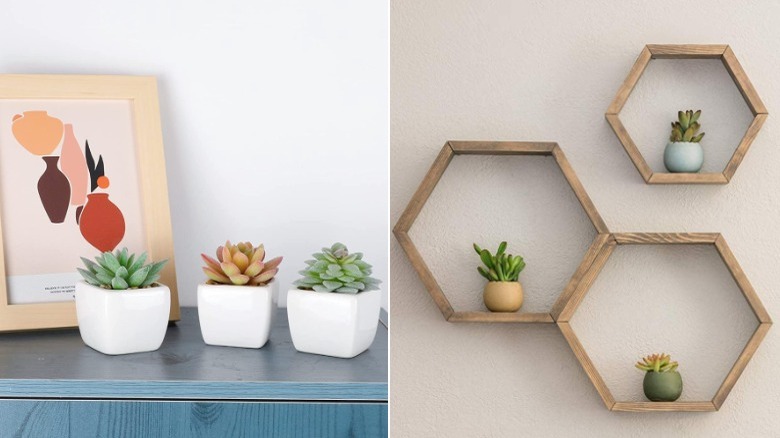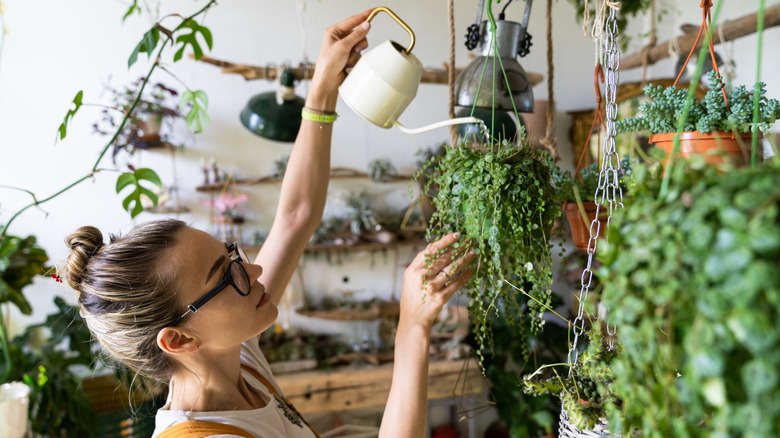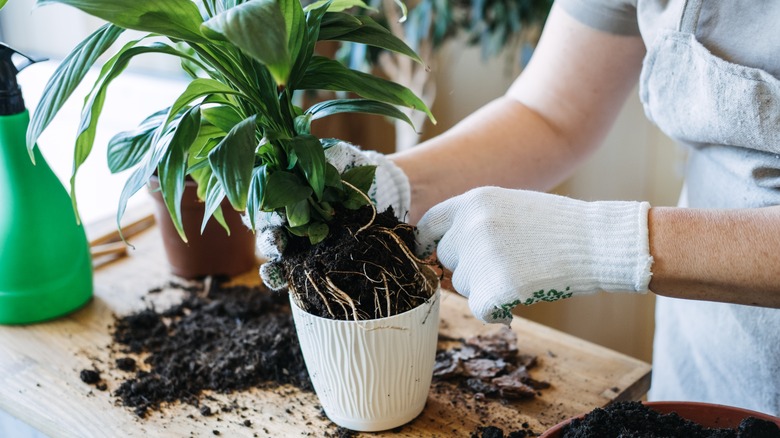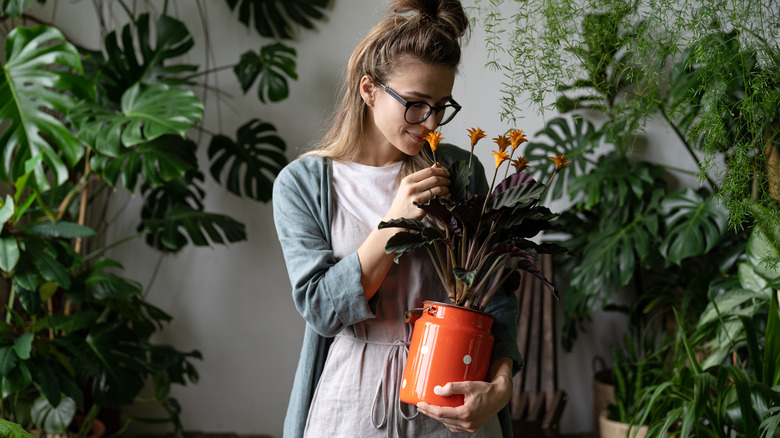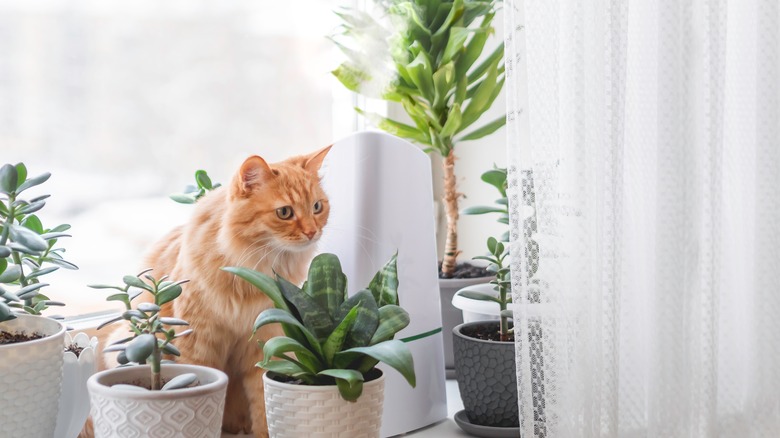5 Points To Consider In The Real Vs. Fake Plants Debate
Since fake plants were invented, a debate has ensued about whether real or artificial botanicals are better. To give you an idea about how long this debate has lasted, experts believe that the creation of faux foliage originates from the Roman and Egyptian eras and may even date back further. Gardeners and those who love nature often argue that real houseplants have more health benefits and look more realistic. On the other hand, those who don't have a green thumb are typically team fake botanicals all the way.
If you're torn between these two options, there are five aspects of both sides that you should consider before choosing the type which is best for you. Further, while it may seem like you need to choose one or the other, you could always mix living plants with plastic or silk ones. This will allow you to benefit from the natural appeal of real plants and the low maintenance of fake types.
Appearance
When it comes to appearances, real plants are obviously going to appear natural. However, this doesn't mean artificial types can't look authentic as well. While plenty of cheaper types are fake, countless quality foliage look just like the real thing — though they can be pretty expensive. Further, they can even be made to feel like they're living plants, called real-touch plants. To find the best types, ensure they don't look perfect, symmetrical, or shiny; these characteristics will give away their identity.
To demonstrate that faux plants can look just like real ones, Blooming Artificial put out a survey in 2018 that asked participants to determine if 20 images of plants were either real or fake; according to The London Economic, the average score was 55%. This suggests that many could not tell the difference and were guessing. To see if you've got an eye for lifelike foliage, decide which of the above succulents are real or fake; if you guessed that the white pots on the left were faux, you're right. When it comes to appearance, both natural and artificial types are great options.
Maintenance needs
While most houseplants aren't difficult to care for, they're much more complex than their faux counterparts. Real botanicals need to be placed in sunlight, watered, potted and repotted, and trimmed. They also risk attracting insects into your home, which must be quickly addressed to avoid an infestation. While this isn't a problem for gardeners, it may be a lot to remember for those who don't know much about plants. Further, if you often travel, you may be unable to care for your houseplants, which could cause them to die.
On the other hand, artificial greenery doesn't require any of this. All they need is the occasional dusting and, if they're placed in sunlight, a UV protectant spray to keep them from fading. They also don't pose the threat of dying, which is why they've earned the name "permanent botanicals." Those interested in gardening who have the time to care for living plants may desire real ones, while others should opt for faux types.
Costs involved
When it comes to costs, fake plants are typically going to be pricier than real ones. To demonstrate this, Amazon sells fake and real snake plants, and the faux one costs $18 more ($39.99 vs. $21.99, respectively). Further, some artificial types can get extremely pricey if you want them to look hyperrealistic, even up to thousands of dollars.
However, when considering the cost of living types, you should weigh more than just how much the plant is priced for. This is because, while faux botanicals will last forever and require little maintenance, real ones need potting soil, fertilizer, and sometimes bigger pots. Additionally, if your greenery dies, you'll need to spend money to replace it, and for those who aren't good at taking care of plants, this cost could add up fast. At the same time, because faux types are often much more expensive than real ones, you'll still probably save money by choosing living plants, especially if you're dedicated to taking good care of them.
Health benefits
Real plants have one main health benefit that faux types do not — they purify the air. If this is your main concern, choose a weeping fig, aloe vera, pothos, spider, snake, or bamboo plant. Another benefit of living species is that they're known to increase happiness and productivity while reducing anxiety and depression.
However, many do not know that fake botanicals can also provide mental health benefits. According to a 2019 systemic study published by Sustainability, which reviewed 45 studies, indoor plants, whether real or surrogate, promote optimism and lessen unfavorable feelings, thus improving cognitive health. At the same time, other studies have shown that living botanicals can provide more mental health benefits. Another 2019 study published by Environmental Research and Public Health showed that when elementary students looked at natural plants, they felt more concentrated and comforted than when they viewed a faux type, a picture of a plant, or a planter filled with just dirt. Therefore, while fake types are better than no greenery, real foliage has the most health benefits.
Safety of pets and humans
The final consideration is the safety of everyone in your household. If you don't have any pets and no one you live with has allergies, every real plant species is at your disposal. On the other hand, those with furry friends or who struggle with plant allergies may have a more limited selection.
To keep your dogs or cats safe, you shouldn't choose any toxic species they can ingest, including aloe vera, jade plants, lilies, elephant ears, and devil's ivy, along with many others. Instead, you could either make sure the real plants you choose aren't harmful to them or just play it safe by only using plastic or silk types. If you have allergies, you may need only to choose artificial botanicals, especially if airborne allergens cause your symptoms. You should also make sure you regularly dust your faux plants, as the dust could also cause allergic reactions.
